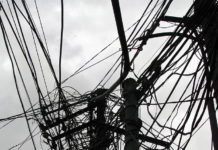The stimulus package and the climate bill recently passed by the US House and now being considered in the Senate will create jobs while delivering a boost to our economy. A "green" stimulus swill create approximately three times as many jobs as the same amount of spending in traditional energy industries. But clean energy is too diverse to consider a single industry. What are the differential jobs creation effects of different types of clean energy and are the most effective sectors getting the most money?
Tom Konrad, Ph.D., CFA
In my next Greener Money column for Smart Energy Living Magazine, I look into the economic behind Presidential and green claims that the stimulus package and the Climate bill just passed by the House can both create economic growth while cleaning up the economy. I found most of the rhetoric coming from the greens to be disappointing. For the most part, it touts the numbers of "Green Jobs" which will be created, without looking at the cost. For instance, while the report from the American Solar Energy Society does a good job defining "green job" and counting them, it does not look at what would have happened if we put our resources elsewhere.
Probably the most incredible claim I heard from on the green side came from Jigar Shah, who told me via email that spending on solar photovoltaics produces "more jobs per federal dollar invested" than other green technologies. He did not respond to two requests for his source. I found this claim hard to believe, because solar manufacturing is very capital intensive, and manufacturing jobs are likely to be high-skill and highly paid. The labor-intensive installation is unlikely to completely make up for capital intensive (and often overseas) manufacturing. Clean energy investments which are not capital intensive, such as weatherizing homes, are likely to produce more jobs because 1) less money is spent on equipment and more on labor, and 2) the workers are typically paid less.
The Cost of Creating a Job
The best national report I read was Green Prosperity, which was sponsored by Green for All and NRDC, and written by the economists Robert Pollin, Jeanette Wicks-Lim, and Heidi Garrett-Peltier at the Political Economy Research Institute at the University of Massachusetts, Amherst (PERI). This report used data from the US Commerce Department Input-Output tables and IMPLAN to look at the potential for job creation from each $1M of spending in various industries, some of which is presented below in table 3 from the report:
TABLE 3. BREAKDOWN OF JOB CREATION BY FORMAL EDUCATIONAL CREDENTIAL LEVELS
| 1) Clean Energy Investments | 2) Fossil Fuel Investments | 3)Difference (col 1-2) | |
| Jobs per $1M | 16.7 | 5.3 | 11.4 |
| % of category | 100% | 100% | |
College degree jobs
|
3.9 | 1.5 | 2.4 |
| 23.3% | 28.3% | ||
Some college jobs
|
4.8 | 1.6 | 3.2 |
| 28.7% | 30.2% | ||
High School or less jobs
|
8.0 | 2.2 | 5.8 |
| 47.9% | 41.5% | ||
High school or less jobs with decent earning potential
|
4.8 | 0.7 |
4.1 |
| 28.7% | 13.2% |
Note that while clean energy spending creates more high paying jobs than fossil fuels, clean energy is even better at creating jobs for low skilled workers: Everyone stands to gain, but those who have the most trouble finding jobs have the most to gain.
Comparing Clean Energy Industries
Un fortunately, even this report does not detail the differences Jigar Shah was alluding to: the difference in job creation between clean energy investments. Where can we best deploy our stimulus dollars for the greatest effect? I contacted the authors of the study, and Heidi Garrett-Peltier was able to provide the following job creation numbers for industry sectors they considered in their research:
| Sector | Percent of spending in Green Program |
Jobs per $1M spending |
|
Weatherization |
40% |
17.1 |
|
Transit/Rail |
20% |
20.8 |
|
Smart Grid |
10% |
13.3 |
|
Wind |
10% |
13.8 |
|
Solar |
10% |
14.1 |
|
Biomass |
10% |
15.5 |
|
"Green Program" |
100% |
16.7 |
| Fossil Fuel | – |
5.3 |
Here, "Green Program" is a weighted average of the six energy industries, with the weights approximating the anticipated spending contained in the stimulus package and the climate bill. They did not look at the credential level job creation benefits of the clean energy sectors individually.
I find it very encouraging that the two best job-creation sectors (Transit/Rail and Weatherization) are also the sectors which get the lion’s share of investment; this is why the Green Program as a whole produces more jobs per million dollars spent than any of the sectors besides these two.
Will the Jobs Last?
All this discussion is about a stimulus to the economy, in order to jump start it and get it going again. The Green Prosperity Report considered only jobs created by the direct effects of the spending, and the indirect effects of increased spending by people whose earnings increased due to higher earnings. These new jobs are only likely to last as long as the spending continues, after that, the hope is that the economy will have begun producing jobs again without federal stimulus.
Nevertheless, there will be ongoing effects that will help the economy long after stimulus spending has ended, and the impressive job creation numbers above do not consider these effects, which "dominate the job creation figures" according to Howard Geller, the Executive Director of the Southwest Energy Efficiency Project (SWEEP), and co-author of a study on job creation from energy efficiency measures in Colorado. Weatherization was just one type of energy efficiency measure the SWEEP study looked at, although the other sectors above were not considered because of SWEEP’s focus on energy efficiency.
He says, "I don’t think renewables are going to have nearly as much impact [as efficiency]. Using the same input/output model, you won’t get nearly the job creation from the energy bill savings. It’s the cost effectiveness of EE that leads to the savings and long term job creation." So, to the extent that measures are cost effective, they will produce
ongoing savings and job creation. Of the spending sectors listed above, Biomass is likely to be the most cost effective of the energy generation technologies (Wind, Solar, and Biomass), if the money is used for biomass co-firing in existing coal plants, and both Wind and stand-alone Biomass will be more cost effective than Solar (see my article What Does Clean Energy Cost?.) Only Biomass co-firing is likely to be able to compete with weatherization for long term job creation effects among these three.
The ongoing job creation effects of smart grid are unknown, since no one has done it before. However, giving people better information about their energy usage has been shown to reduce their consumption as much as 15%, so there should be some long term effects.
For transit spending, the benefits depend on if the transit improvements will be effective enough to allow people to reduce their car ownership: According to the Green Prosperity study, the marginal cost per mile of travel on transit is about the same as the marginal cost of auto travel, but large gains are available from any reductions in car ownership.
Conclusion
Green investments will be good for both the economy and the environment. Nevertheless, any additional federal spending will use borrowed fund that have to be repaid. Hence, we should focus on spending in sectors with both large job creation potential, and long term impacts. Clean energy as a whole has excellent job creation potential and long term impacts, but some sectors are better than others. Although the climate bill which passed the house is not everything we might want, it’s nice to know that most of the spending is going to the right places.









Thanks for the article. Interesting. You may be interested in two reports from consulting firm KEMA. One is on the job creation potential of smart grid and the other is on bio-mass cofiring. Both available (free) at http://www.kema.com
Jeff,
I looked at the biomass white paper… tiw as short ‘n’ sweet, and basically confirmed that biomass cofiring is very economical (although KEMA may be biased, since they hope to consult on this sort of project.
The smart grid paper was much larger, and I had trouble downloading it.
Clean energy may be great at creating jobs but there is no proof that many of the loony toons technologies so far proposed will create worthwhile quantities of clean energy. We should be pushing ahead with wave and marine current generation schemes both of which are not going to be big job creators.
There are two types of clean enrgy: (1)estabilshed, cost effective technologies such as efficiency, mass transport, and biomass which will create jobs and boost the economy because they are good investments in the first place, and (2)reaserch technologies such as the wave and ocean current which you cite. These are not going to create jobs in the short term, and they should only be funded on a small research scale until they do become economical, or near economic.
Solar is in between and currently making the transition from category #2 to category #1.